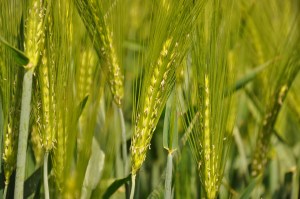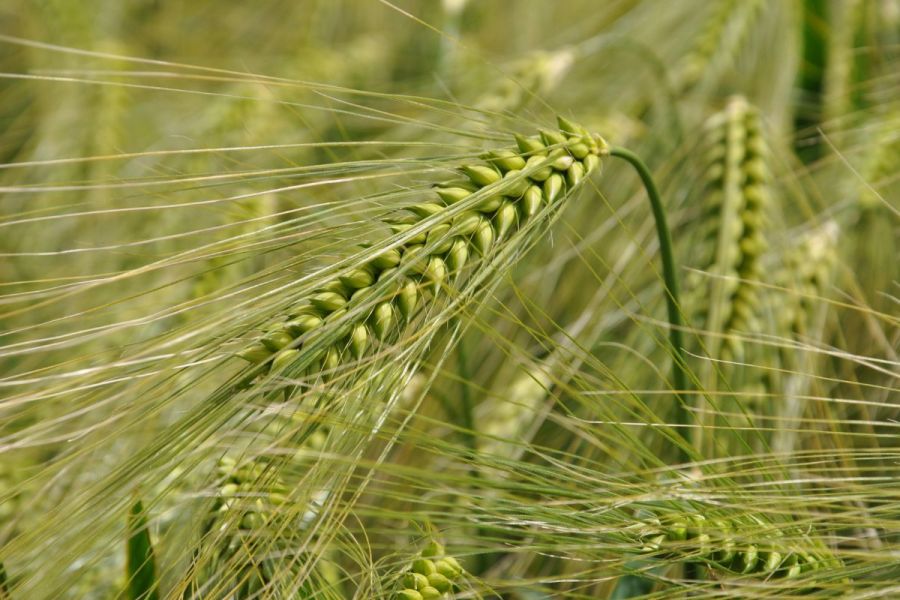From grassweed suppression to improved NUE to early entry for oilseed rape to flexible end use, hybrid barley has cemented its value to growers over the past two decades. CPM discovers how the crop offers both resilience and yield stability.
“The hybrid root traits give resilience across regions, across soil types, and across different seasons.”
By Lucy de la Pasture
By its very nature, farming is uncertain; it’s at the mercy of the weather, agronomic challenges and the markets. But when it comes to controlling what can be controlled, variety choice is one of the most important decisions on the farm.
Introduced twenty years ago, Colossus was the first hybrid barley to reach the market in the UK. It promised hardier crops and 10% better yields than conventional types. It’s fair to say that not only have hybrid varieties improved significantly since that pioneer variety, the agronomic benefits they offer are now also much better understood and this is reflected in their popularity on farm, with 33% of certified barley seed sales now hybrid varieties.
Asked why hybrids have become such a favourite, Ben Urquhart, Syngenta seeds technical expert, simply answers ‘heterosis’. That’s the technical term for hybrid vigour – where the progeny of cross-pollinated varieties exhibit greater biomass, speed of development, and yield than both parents.
While yield advantage is undoubtedly a big plus point for Hyvido hybrid barley varieties, Ben believes it’s far from the only reason hybrids are proving popular with farmers. “SY Kingsbarn is the most popular, with a yield 106% of controls, but it’s consistent with it. Both Bazooka and Belfry were added to the AHDB Recommended List (RL) in 2016 and have retained their place with yields of 104%. They are high yielding varieties that have maintained their performance over time.”
Another major driver of hybrid barley popularity is its competitiveness with grassweeds, adds Ben. “In trials we’ve seen a clear difference in grassweed suppression between species – for example, winter wheat and winter barley – and between barley varieties, with hybrid six-row varieties being more competitive than conventionally bred six-row and two-row varieties the least competitive of all.”
Following these early trials in blackgrass, more recent work has shown hybrid barley to be more competitive against ryegrass and brome species – both increasing problems, partly as a consequence of the trend in tillage reduction.
“We know hybrids are particularly beneficial in a blackgrass situation, reducing numbers by 20 heads/m2. With ryegrass and brome the same competitiveness applies; suppressing grassweed growth, which leads to fewer tillers, smaller ears and reduced seed return in all of these species.”
Ben notes that hybrid barley will suppress grassweeds irrespective of their herbicide resistance status. “Reduced weed seed return to the soil from surviving grassweeds is a key part of sustainable grassweed reduction. However, there are also shorter-terms benefits, and the latest calculations reveal the yield benefit alone from suppressing blackgrass with hybrid barley could be worth more than £50/ha (0.165t/ha).”
But it’s not just above ground that hybrid barley has an ability to suppress grassweeds, trials show the architecture of its vigorous roots also compete with blackgrass for nutrients and water.
“This bigger root system has the ability to get to depth and scavenge for nutrients and water. The hybrid root traits give resilience across regions, across soil types, and across different seasons,” says Ben.
It’s been calculated that increasing average root length by just 1.0cm would give access to an extra 130t of soil per ha for extra water and nutrient uptake, based on average soil density, so it helps explain the competitive advantage of hybrid varieties over conventional.
And knowing that the rooting system of hybrid types is inherently larger than in conventionally bred varieties, it seems likely that plants were able to make better use of nitrogen. So ADAS were charged with exploring nitrogen use efficiency in trials to establish whether this was the case.
“We started off from a sustainability angle to try and understand whether it was possible to reduce bagged nitrogen inputs. We’re now in the third year of trials with ADAS and are finding hybrid NUE is significantly different to that in conventionals,” explains Ben.

The combination of consistent performance and high yield has made SY Kingsbarn the favourite hybrid barley variety in the UK.
ADAS’ Dr Sarah Kendall is leading the trials measuring nitrogen uptake efficiency and nitrogen utilisation efficiency, which together translate into overall nitrogen use efficiency. The research is comparing two hybrid barley varieties – SY Kingsbarn and Bazooka – with two conventional two-row winter feed barley varieties at six different N doses, which range from 0-360kg/ha.
“We’re seeing that the overall higher NUE in hybrids is being driven by improvements in nitrogen utilisation efficiency, indicating that for the same amount of N taken up by the crop, the hybrids produce more yield,” explains Ben. “It all comes back to hybrid vigour – they’re just inherently better at growing.”
Further trials with ADAS are investigating the water use efficiency of hybrids, which may further explain the resilience and yield stability characteristics hybrids have become associated with.
The multiple rooting benefits which are inherent in hybrid varieties can be further enhanced by using seed treatment containing sedaxane, such as Vibrance Duo (fludioxinil+ sedaxane), adds Ben. “If you’re looking to establish hybrid barley, particularly when for grassweed competition or when drilling late in the year, then sedaxane will help the crop up and away and to become well-rooted quickly.”

Although yield is always something breeding programmes aim to improve, Ben Urquhart sys they’re looking for the complete package – yield, grain quality, comprehensive disease resistance and varieties with stiff straw that are resistant to lodging and brackling.
While the advantages of hybrid varieties are now well known, breeding programmes have looked to plug some of the weaknesses that were associated with some of the early varieties, including specific weight and resistance to lodging.
“Yield is always something we’ll be aiming to improve as it’s a necessity for inclusion on the National List and the RL, but we’re looking for the complete package – yield, grain quality, comprehensive disease resistance and varieties with stiff straw that are resistant to lodging and brackling.”
Recently added to the RL, varieties SY Nephin (2023) and SY Canyon (2022) are a case in point, highlights Ben. “Volume and Boost are hybrid varieties that have been superseded but specific weight was a weakness for them. Now we have both Nephin (71.4) and Canyon (71.7) which have higher specific weights than most two-row feed varieties, second only to KWS Cassia (72.4) and LG Caravelle (71.8).
The untreated yield figures for Canyon and Nephin evidence the importance of disease resistance in the Syngenta breeding programme. Canyon leads all the varieties on the RL with an untreated yield of 91% of the treated control, with Nephin just one point behind at 90% which equals the best of the rest.
“These results are driven by good resistance across barley diseases, with Nephin achieving a resistance rating of 8 for rhynchosporium,” points out Ben.
Although hybrid varieties are naturally tall, straw stiffness has been a breeding priority, says Ben. “Even older varieties like Belfry have stiff straw and that’s one of the reasons it’s the number one variety in Ireland. Kingsbarn is the most popular hybrid in the UK and has a rating of 7 for resistance to lodging.
But Ben’s keen to point out that hybrids still require an appropriate PGR programme because of their height and high yields.
Tolerance to BYDV is also a breeding target and candidate varieties SY Buzzard and SY Harrier both have this trait, with further varieties in the pipeline. As often seen with the introduction of new traits, the yield lags slightly behind the top scoring varieties, explains Ben.
“Although there’s a small yield lag in these early varieties, they’re similar to Bazooka and KWS Feeris in terms of yield and specific weight. Buzzard scores a 7 for rhynchosporium resistance so will be a well-rounded variety for wet weather disease resistance,” says Ben.
Their hybrid vigour also gives flexibility when it comes to drilling dates, he adds. “Hybrids can be drilled into October, later than conventionals, which is ideal in grassweed and higher-risk BYDV situations as part of an integrated management strategy. Where drilling can’t be delayed, varieties with BYDV tolerance can help manage the risk with less reliance on insecticide applications.”
This article was taken from the latest issue of CPM. Read the article in full here.
For more articles like this, subscribe here.
Sign up for Crop Production Magazine’s FREE e-newsletter here.




